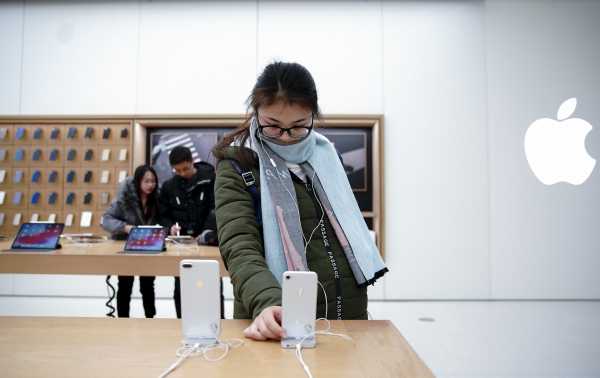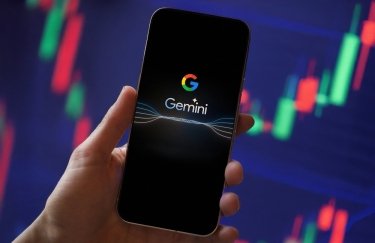

It’s a new year, and we are all excited about it. New is good, “level up,” clean slate, and so on.
Actually, we’re all liars! Our passion for newness is a facade, as proven by the fact that we are apparently all clinging to our dusty old iPhones as if they are headphone jack-equipped talismans connecting us to a distant past when we could still force our crushes to listen to Coldplay songs through drugstore earbuds.
Or maybe we’re just clinging to them because they are small enough to fit in our back pockets. Or because they don’t cost $1,449. Or because they still work.
No matter our reasons — whether because smartphones are no longer getting meaningful, thrilling new features, or whether we are still enraged about the murder of the headphone jack, which was absolutely unreal — we are not buying new iPhones.
Related
The iPhone is not a luxury good
In a letter to Apple’s investors published Wednesday, CEO Tim Cook said first-quarter revenue for the company will be lower than expected by up to $9 billion, citing lower iPhone sales. This decrease in sales, he wrote, is largely because of slow growth in developing markets (namely China; in a CNBC interview, he specifically called out trade tensions caused by the Trump administration). But the letter also references developed markets in which “iPhone upgrades also were not as strong as we thought they would be.”
The iPhone is Apple’s most important device and the source of the majority of its revenue. Following the release of the letter — which itself followed a temporary freeze on Apple trading — the company’s stock dropped by almost 10 percent.
Though Apple is citing uncontrollable global markets as the primary cause of the missed mark, it seems obvious that its problems are more existential than a trade war.
Vlad Savov writes for The Verge, “If there’s one thing we’ve learned from Samsung’s soft sales of the Galaxy S9 through 2018 and Apple’s dramatically reduced forecast of iPhone revenues for the end of that year, it’s that most people who want a great smartphone already have one.”
And New York magazine’s Jake Swearingen reported last month that smartphone sales in general had passed their plateau and were entering their first major decline, largely due to market saturation and people waiting longer to upgrade devices. Amazon is the only major tech company so far that’s been willing to openly court children, and a dearth of warm, iPhone-less bodies is a major issue for Apple.
If, for less than the cost of an oil change, you could add a couple of years to the life of your current iPhone, why wouldn’t you?
That problem was exacerbated last year when Apple admitted that it had been secretly slowing down older iPhones in order to help them cope with battery degradation. In December 2017, the company slashed the cost of a battery replacement from $79 to $29 to make amends. But in yesterday’s investor letter, this was framed almost as planned obsolescence, and the fix as a profit killer.
If, for less than the cost of an oil change, you could add a couple of years to the life of your iPhone SE — one of the last phones with a headphone jack and a reasonable size and all the features that are actually core to the iPhone user experience — why wouldn’t you? The letter (sort of awkwardly) makes it seem as if Apple wishes it hadn’t given people the opportunity to ask themselves this question.
But most people do not have the full cost of a new iPhone on hand at any given time. And it’s hard to remember the last truly groundbreaking iPhone upgrade (the front-facing camera, if you ask me). In fact, from where the average consumer is sitting, some recent iPhone changes look more like reduced, or at least more complicated, functionality.
Related
Apple might kill the iPhone home button for good. One question: Why?
I also wonder if we’re ignoring the fact that Apple isn’t that cool anymore. It’s not anyone’s fault. No brand can have a cult following forever. See: Diet Coke, or MTV, or Abercrombie & Fitch, or uh, Ford. Or the closest comparison, Motorola. But you don’t see lines outside Apple stores on new-iPhone day anymore. The Chance the Rapper song about Steve Jobs is years old, and now all anyone raps about is Instagram.
Upgrading your phone isn’t fun. It feels more like a chore or a bad investment — like buying a new sofa while you’re filing for divorce. For a very long time in the US, the matte white box and status symbol earbuds and far preferable blue text bubbles — Apple’s carefully contained ecosystem of cool — felt unshakable. But now Google has made a serious hardware contender with novel and surprising camera features that people actually care about. Apple replaced the perfectly functional home button. Tim Cook is not the type of CEO who likes to argue he invented the new world.
Mostly. “Apple innovates like no other company on earth, and we are not taking our foot off the gas,” the investor letter ends. “We can’t change macroeconomic conditions, but we are undertaking and accelerating other initiatives to improve our results.”
Hopefully, this does not imply that Apple will try to beat Samsung at the $2,000 foldable smartphone game, or Motorola at its forced flip-phone resurrection, or any literal interpretations of those gasoline metaphors. Just go back to the headphone jack?
Sourse: vox.com






